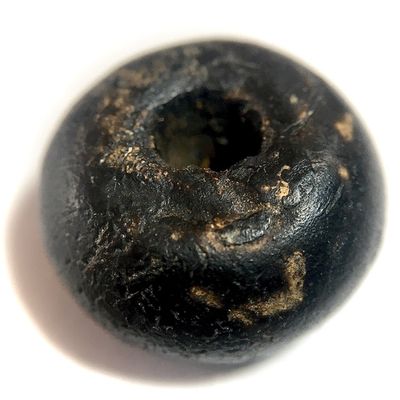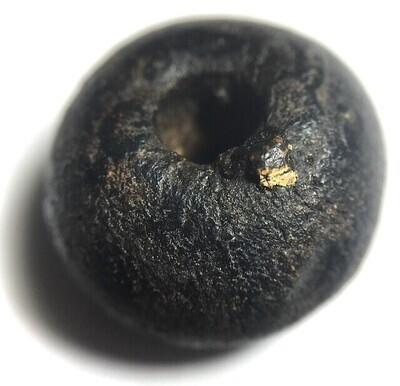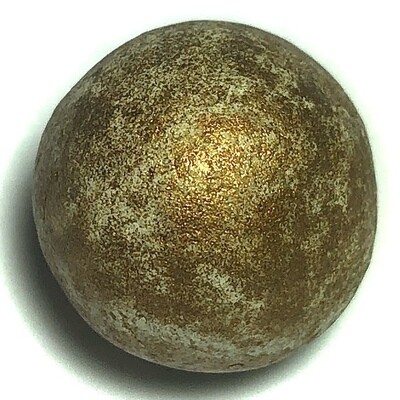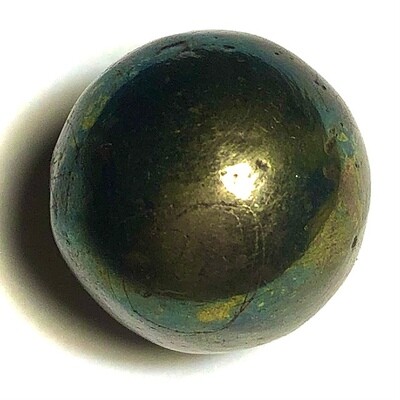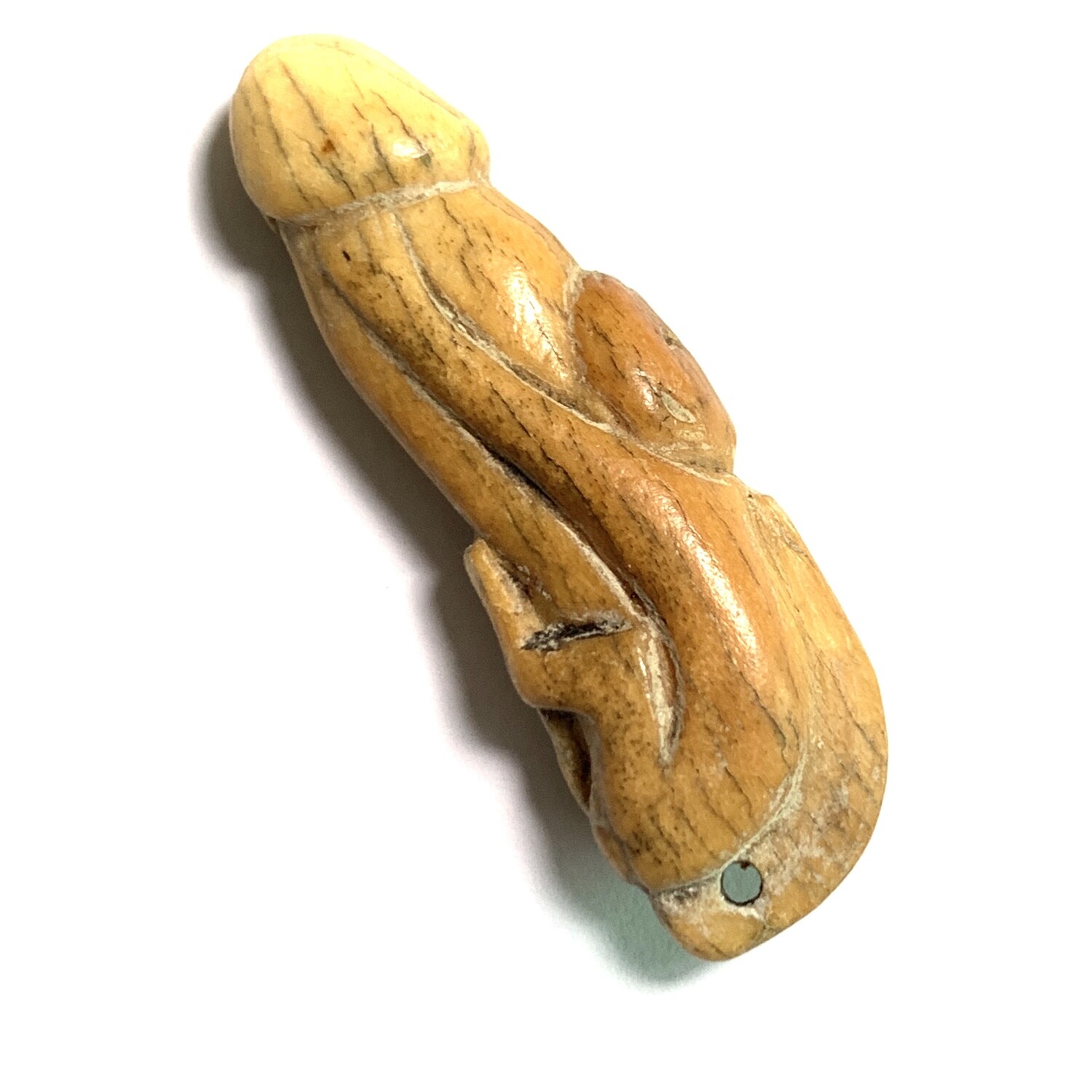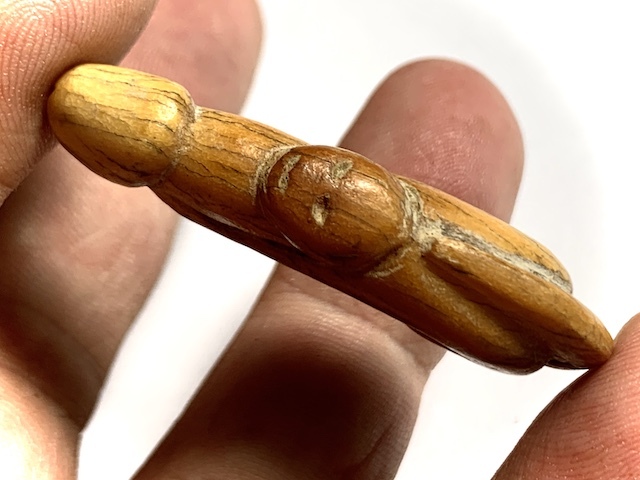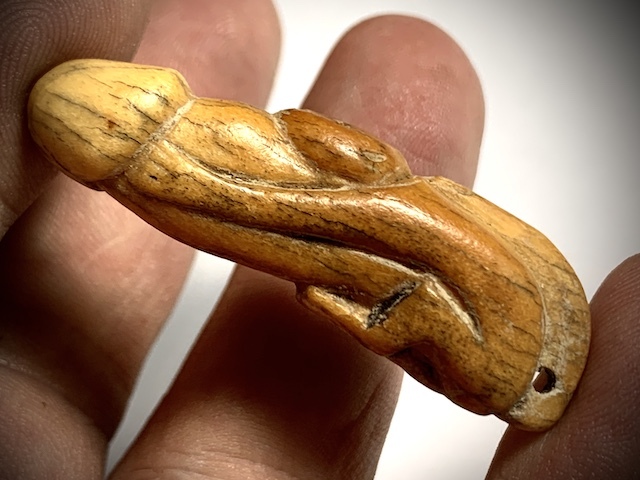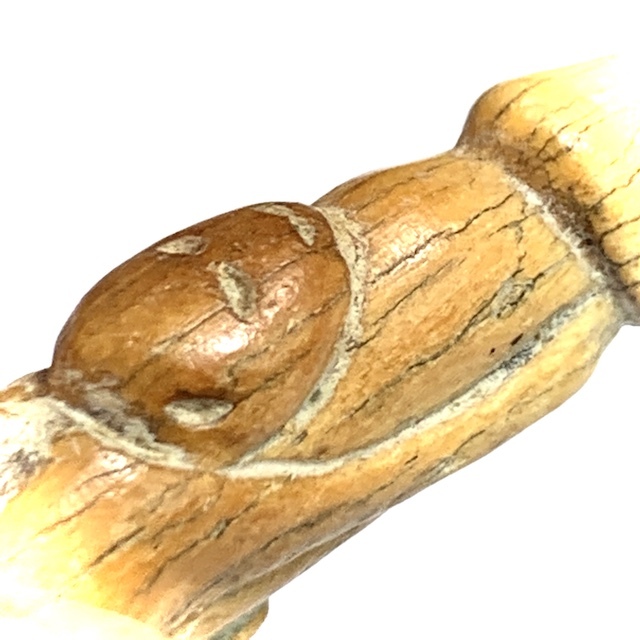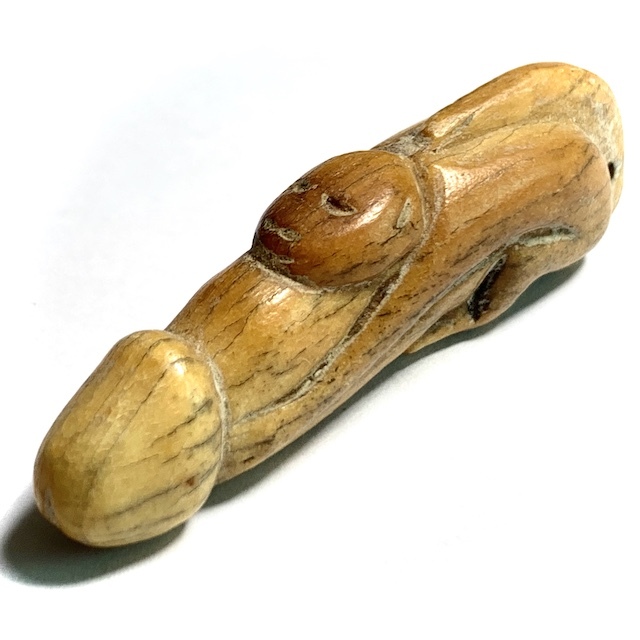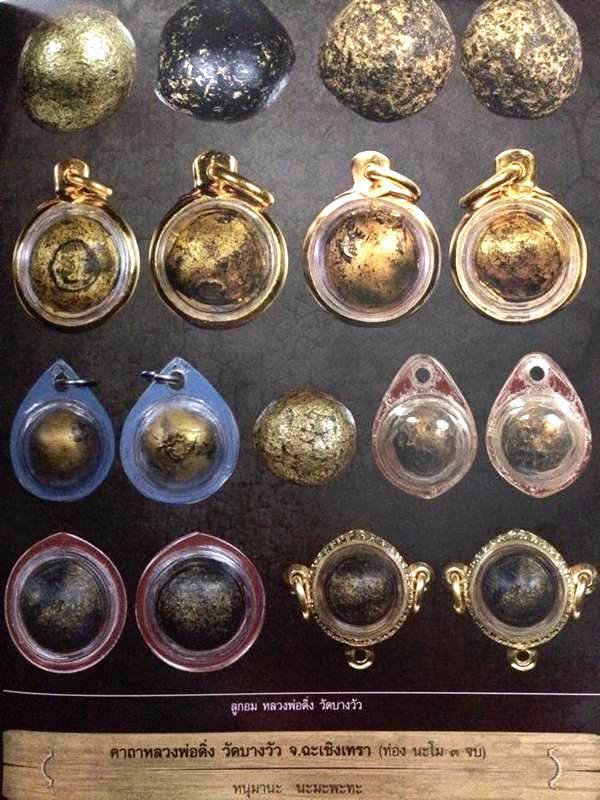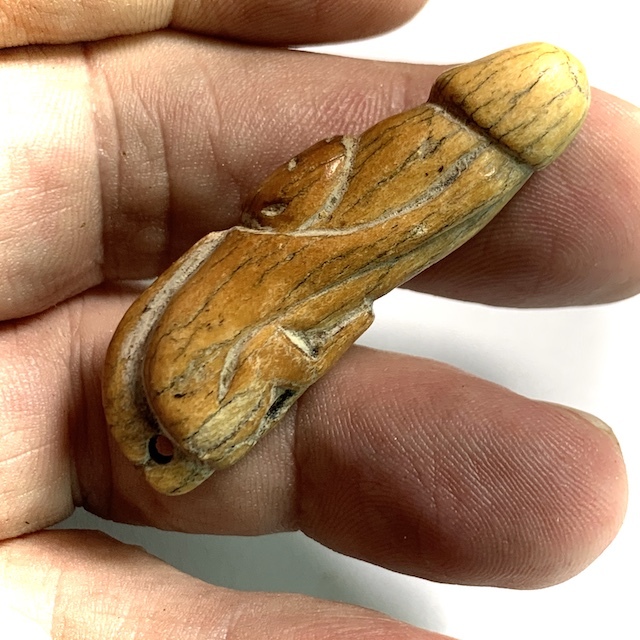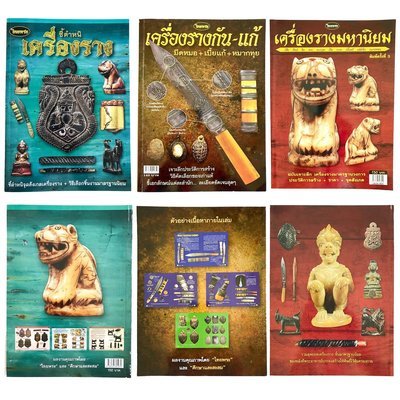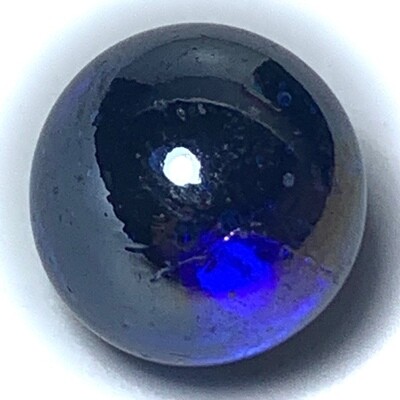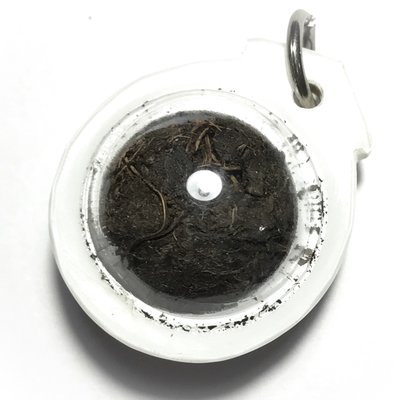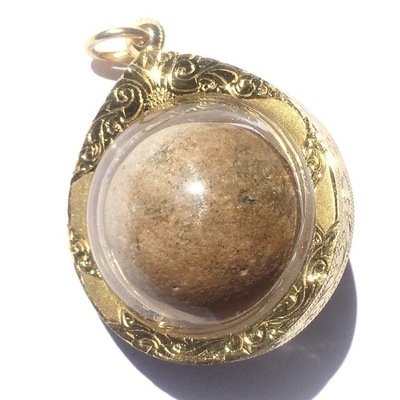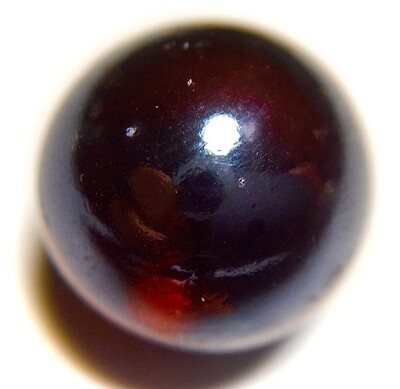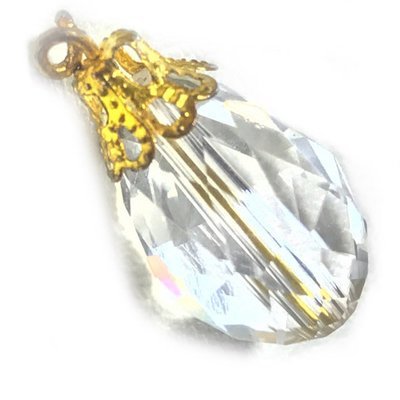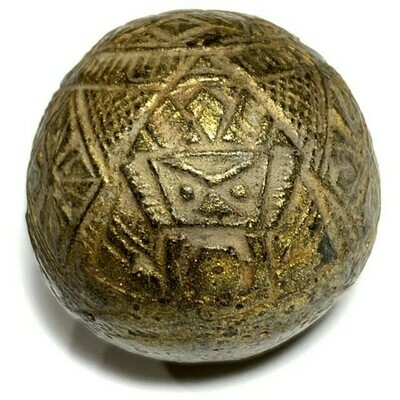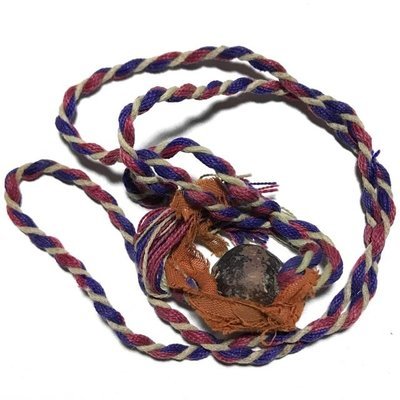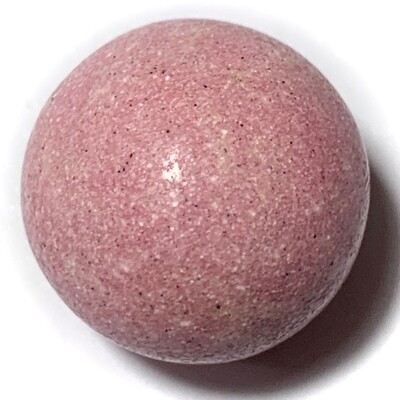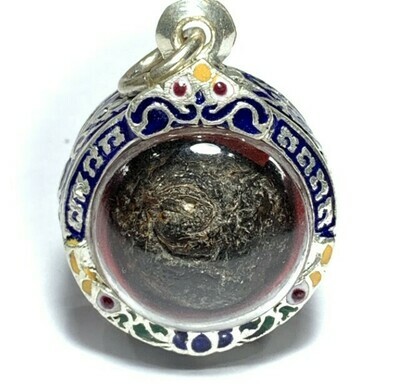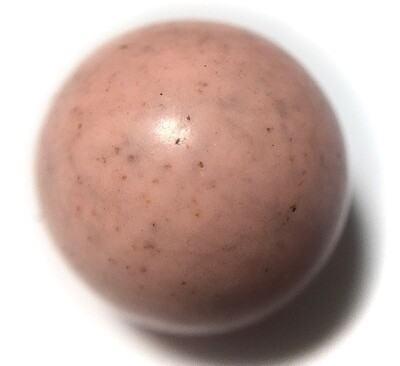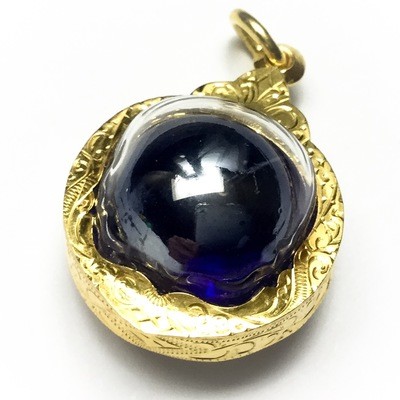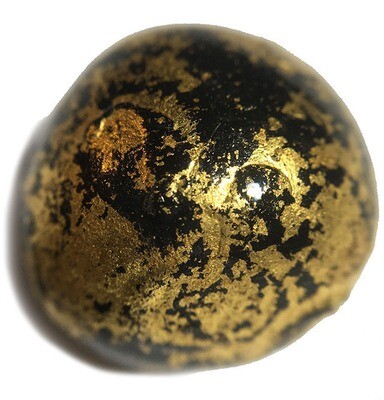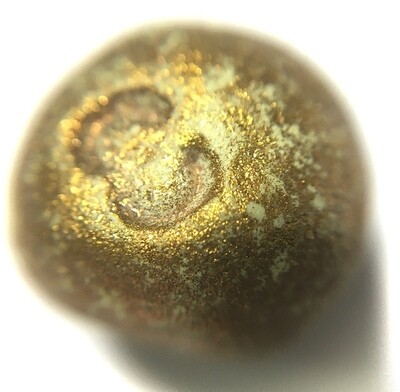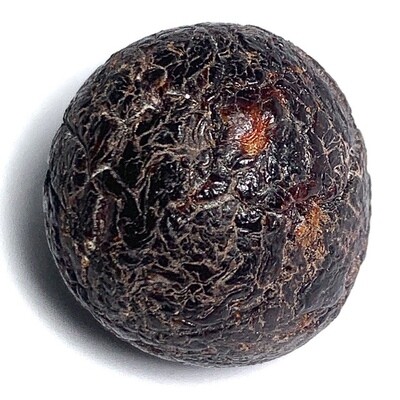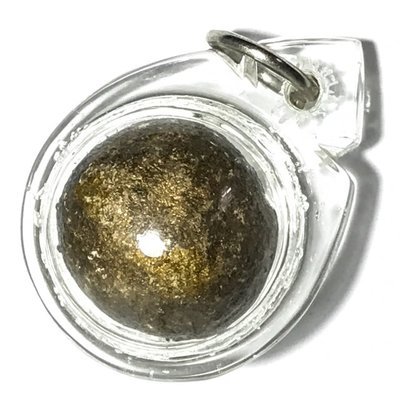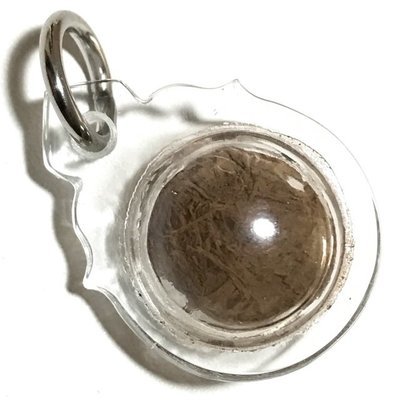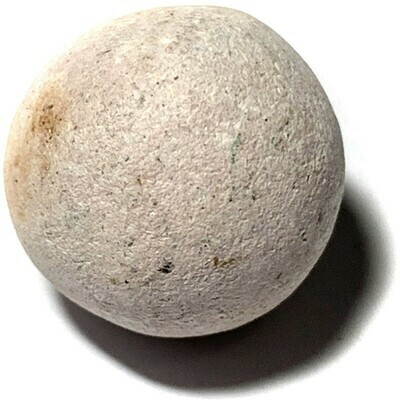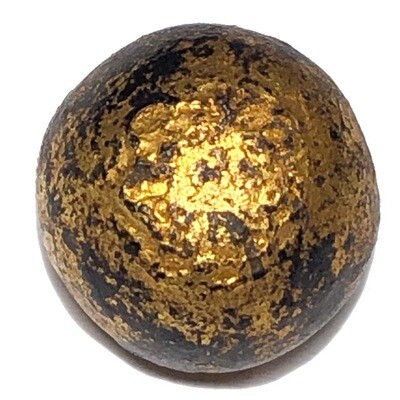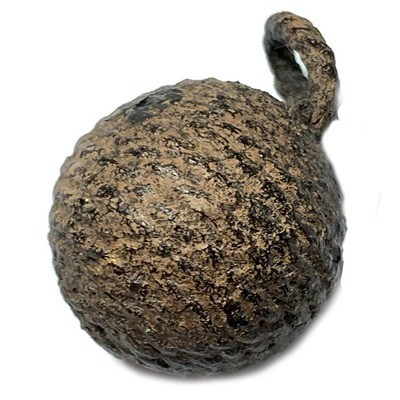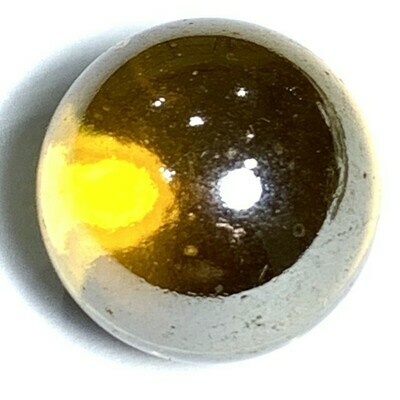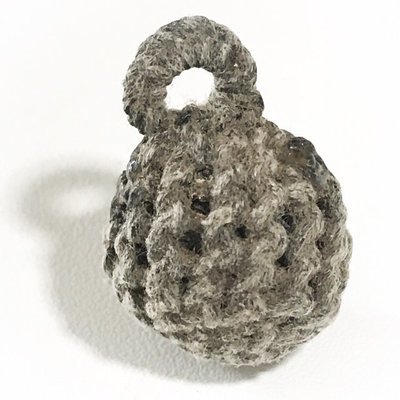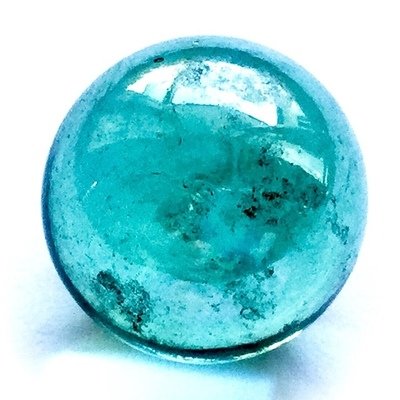Presenting a tiny but powerful and rare classic amulet from one of the Great Khao Or Masters of the 20th Century, Rian Glom Lek Hlang Chedi 2505 BE Nuea Tong Daeng Miniature Guru Monk Coin Por Tan Klai Wajasit
This Sacred amulet of the Great Khao Or Master of Nakorn Sri Tammarat, Master of Wat San Khan and Wat Pratat Noi, is a very rare amulet from Por Tan Klai’s 2505 BE Blessing Ceremony Edition, and is considered a ‘Jaek mae Krua’ type amulet (meaning ‘give to the kitchen maids and temple helpers’), which is suitable not only for men, but due to its miniature size, a perfect amulet for ladies or children to wear.

Rian Glom Lek 2505 BE Por Tan Klai Wajasit Wat Suan Khan
The 2505 BE edition of amulets of Por Tan Klai, is a highly preferred edition, which saw his famous ‘Rian Glom’ round Monk coin amulet with Chakra released, The Rian Glom Lek Hlang Chedi, and the Roop Tai Por Tan Klai Guru Monk Blesséd Photographamulets such as look om chan hmak and ya sen tobacco balls, and sacred powder amulets of various models.
A very rare and highly prized amulet for the devotees of Por Tan Klai to associate with his image and pray to him with a blessed image of the Guru, and the Chedi Relic Stupa on rear face for Buddhanussati and Marananussati. A powerful and Sacred amulet which has passed through the hands of the Guru and been blessed by him.
Por Tan Klai was one of the Top Guru Master Monks of the Last Century, and is considered one of the Four Great Masters of the Previous Generation of Lineage Masters of the Khao Or Southern Sorcery Lineage.
Kata Bucha Por Tan Klai
Palad Khik Nga Gae Ling Jab Hlak Circa 2480 BE Carved Ivory Lingam with Hanuman Luang Por Ding Wat Bang Wua
The Immortal Ling Jab Hlak Hanuman of Luang Por Ding, carved into the shape of a Vanora Monkey hilding onto a Lingam ('Ling Wanorn' in Thai one of the the Humanoid Simian Denizens of the Himapant Celestial realm, and minions of the God Hanuman). An immensely rare and ancient amulet from the Olden Days Abbot of of Wat Bang Wua. Luang Por Ding was highly renowned in his day, for his Palad Khik Ling Jab Hlak Vanora Monkey animist charms, considered to be among the most powerful Vanora amulets of all time. Luang Por Ding was also extremely revered, for his Sacred Powder Look Om wishing balls, made from his legendary Pong Ya Jet Paya Chang Sarn substance.
Free Registered Airmail Shipping Worldwide is Included. The Palad Khik is carved from extremely ancient ivory, and is instantly recognizable as authentic ancient ivory, even with the naked eye, for the parallel rifts and crevices which travel along the shaft of the Palad Khik. The Palad Khik is most beautifully carved by one of Luang Por Ding's Master Artisans, and is a very rare item to find in ivory from this master, who would usually make them from mostly from sacred wood, due to the rarity of ivory. Luang Por Ding, was a Master of the Wicha Wanorn Hanuman Vanora Monkey God Invocation, and his Hanuman amulets are among the most highly sought after of all Hanuman amulets, along with those of the Great Luang Por Sun, of Wat Sala Gun.
The Thai Palad Khik an Animistic Phallic amulet, carved in the form of a Male sexual organ. Palad Khik are made in all sizes, ranging from miniature ones the size of your little finger, right up to ones which are higher than a human. Palad Khik are extremely popular with Thai people, worn as amulets tied to a cord around their waist.
The belief in the Shiva Lingam, or ‘Leungk’ (Thai pronunciation) phallic energy of the Palad Khik, is derived from the Brahman influence which has been inflected on Thai Theravada Buddhism, since both belief systems came to Siam more than one or two thousand years ago.
It is believed that the Palad Khik Lingam energy is the source of all life forms in the Universe. This is the root of the act of reverence (Bucha/Poojah) to the Palad Khik as a Shiva Lingam, which honors Shiva as the Lord of the World. In India, not only is the Shiva Lingam worshiped, bit there exists also a cult which reveres the female sex organ, which is called the ‘Yoni’ (Vulva, female counterpart). The same thought is applied as that used too revere the Palad Khik Shiva Lingam, that is to say, that all created things must spring out of the Yoni instead of the Lingam.
Below; Over 20 Minutes of Narrative explanation from Ajarn Spencer Littlewood about the Thai Palad Khik Amulet, and how to Pray to them
The practice of making Palad Khik as a portable amulet, for ‘Bucha Siwalingk’ (praying to Shiva Lingam phallic Deity), entered Siam with the influence of the Khom race, whose language and alphabet the Thais absorbed and adapted into their own personalised fashion. Some have said that the integration of Pre-Buddhist beliefs and traditions, into the Thai Theravada Buddhist practice of the common Folk, such as worshiping amulets like the Palad Khik, is not in contradiction to the practice of Buddhism and presents no obstacles.
In fact, it is believed, that since Buddhism sprang out of the roots of Brahman Cosmology, and that the people of Siam adopted Pre-Buddhist Brahman traditions and incorporated them, that this is even a benefit to the preservation of ancient knowledge, and of Thai history and tradition. Most of these ceremonies do not come into any kind of dispute with Buddhist thought. In fact, Buddhist Thought bases itself on many concepts found in Hinduism, and in Thailand, the two Belief Systems can hardly be separated.
The word ‘Palad’, means ‘vice’ (as in ‘vice President, vice Mayor, etc). This has caused the Palad Khik to make some people t exclaim jokingly “why don’t you call it ‘Vice Mayor Khig’?. In fact, the word ‘Palad’ is derived from the Sanskrit ‘Bprasawa’, which translates as “he who stands by the side of’. This was adapted into the Thai language as Sanskrit and Buddhism entered and flourished in Siam. This is why in Thailand, an assistant to the Mayor (Nay Ampher), is called ‘Palad Ampher’.
But the real reason this word (Palad) is used for the Shiva Lingam amulet, is that it is worn as a companion to remain by the side of the wearer (‘he who stands by the side of’). Devotees of the Palad Khik tend to wear it outside of their clothes, around the neck, waist or sometimes hanging inside the trousers, against their loins. The word Palad Khik (“ปลัดขิก” -low sound) was originally pronounced ‘Palad Kik’ (“ปลัดคิก” – rising sound) in ancient times. Many ancient Thai masters and amulet makers were inclined to making Palad Khik amulets, which were extremely popular with the Folk.
Some had Khom Agkhara lettering, such as ‘U A Ma’ or ‘Om’, which are psalms to Brahma, Shiva and Vishnu. Some Ajarn would inscribe Sanskrit Agkhara instead, in Brahman tradition. Even though today’s age of technology has brought many things to distract us from magic, the Palad Khik is still an extremely widespread belief and is worn by Thai people in all provinces. Hang around any Samnak sak or Samnak Ruesi for a while and you will most definitely see someone wearing a Palad Khik amulet.
In the Isan country, Palad Khik is sometimes also called ‘Bak Ben’, or ‘Khun Phet’. Palad Khik has been used by Isan people to ward off dark magic, for example in a case about 2548, the Folk of Roi Et were afraid of ‘Phii Mae Hmaay’ ( a female ghost who hunts men), so they erected a massive totem pole in the shape of a penis, with the initials (S and Y) of the man they believed to be the target of the ghost. They placed the giant Palad Khik in front of the mans house.
Over the years, many rumours and legends of Palad Khik of LP Ding performing miracles of Kong Grapan Klaew Klaad magic and other protective spells, caused the popularity and demand for such talismanic charms to increase, to the point where locals would flock to Luang Por Ding from around the country, to receive an amulet from him. The Palad Khik began to be used as a portable amulet through being carved from wood which was from the Cassiafistula Linn variety of tree, which has medicinal or healing properties.
Ancient Folk would then use this when traveling cross country; If they had to drink water from a stream, or other natural source which may have bacteria or dangerous amoebas, they would take the Palad Khik and use it to stir the water before drinking it, to remove any danger of illness.
Palad Khik is not only applied for preventing dangers and illness, but is seen to possess all other kinds of magical properties, such as Metta Mahaniyom (preference and popularity, friendliness and love, compassion,receiving generosity and mercy), Choke Laap (luck and fortune), good salesmanship, Love charm, and the like.
Luang Por Ding would release amulets to his devotees during temple ceremonies, and on his birthday celebrations. Luang Por Ding was extremely famopus for his Look Om Jet Paya Chang Sarn wishing ball amulets. The Look Om Jet Paya Chang Sarn is spoken of in the Legend of the Great 'Suea Khaw' Invincible Gangster, who was a Looksit of Luang Por Ding.
Suea Khaw maintained that he survived throughout the years of his gunmanship because of the Look Om Paya Jet Chang Sarn, which stopped many bullets from piercing his skin and killing him over the years. It is said to have given Suea Khaw the strength and imposing aura of invincibility, to overcome all his enemies.
The Look Om gained the name of 'Jet Paya Chang Sarn', because of its legendary power to increase the stamina and strength of the devotee over his or her adversaries. It is said that the wearer of the Look Om Jet Paya Chang Sarn is endowed with the strength of the Paya Chang Sarn Battle Elephant. The Look Om was said to both Protect against all Dangers, and Endow the wearer with Commanding Power and Strength. Suea Khaw was a Gangster who was reputed to have defeated and killed over 100 of his competitors, and who had a reputation for his bravery and strength.
Because his sole chosen amulet of protection and power was the Look Om Jet Paya Chang sarn, and the fact that nobody cold defeat him or kill him, was the reason for Luang Por Ding's Look Om Jet Paya Chang Sarn becoming so Legendary.
But one day, Luang Por Ding told Suea Khaw that he was too violent and that if he did not give up being a gangster, then he would surely encounter a violent and premature death. Suea Khaw had become very overconfident because no knives were able to penetrate his skin, and guns would not fire when aimed at him. Because of the invincibility which Suea Khaw had been enjoying, Suea Khaw did not listen to Luang Por Ding's warnings.
One day the Police Force special missions unit came to Wat Bang Wua to ask Luang Por Ding if it was true that Suea Khaw possessed 'Hnang Hniaw ('sticky skin'. a term meaning a person with Kong Grapan Chadtri Magic). Luang Por Ding admitted that it was true that Suea Khaw possessed Protective Magic, and that he was not able to be killed with knives or guns. But Luang Por Ding added that Suea Khaw would fall prey to his own Karma without need of guns or knives, because he refused to listen and change his ways. Luang Por Ding added "I cannot tell you though, by which way the gangster Suea Khaw can be killed, for it would break my Precepts"
But at this moment, one of the Samanera Novice Monks was listening and butted in to say to the Police "If you want to kill Suea Khaw, you have to use a bullet that has the head of the bullet cast from metal taken from the blade of a Mitmor spirit knife from Luang Por Soke (Wat Pak Klong)".
Luang Por Soke was a colleague of Luang Por Ding and holder of the same Lineage Wicha, and would inscribe the Wicha of Luang Por Ding onto the Blades of his Mitmor. Some time later the Police caught Suea Khaw and he was sentenced to death, and was executed by Government Executioner, using Bullets cast from the blade of a Mitmor of Luang Por Soke (who was also a great master of Palad Khik).
Luang Por Ding, was a Great Master of the Wicha Hanuman, and all Vanora Monkey Deities, for which he was extremely famous. He blessed many inimitable hand carved talismanic amulets (Krueang Rang), made from artisans of varied levels of skill, with of course the most masterfully carved attaining the highest level of preference. He is also associated with the symbol of the Cow (Wua), which comes from the name of the Temple (Wat Bang Wua). His Look Om Jet Paya Chang Sarn is one of the top Look Om of all Time and is also a high ranking amulet in the annals for Kong Grapan Chadtri Maha Ud Klaew Klaad Power.
